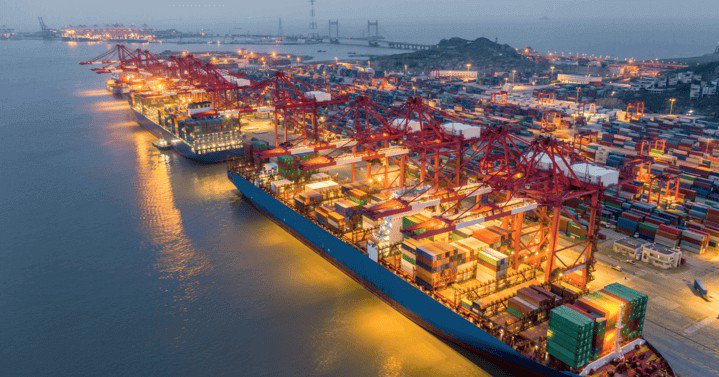
China’s “zero COVID” policies are not ending anytime soon, and with that come numerous concerns for a supply chain already under distress.The two-phase lockdown in Shanghai that started March 28 was meant to end April 5, but was extended indefinitely as officials attempt to contain the recent COVID outbreak – resulting in much larger supply chain disruptions than originally anticipated.
Technically the Port of Shanghai remains open to operate under closed-loop conditions, where workers live and sleep on-site. However, ongoing labor shortages and strict trucking regulations have slowed operations and decreased volumes by an estimated 40 percent, according to the EU Chamber of Commerce in China . Air carriers are canceling flights, while ocean carriers are cutting Shanghai port calls and increasing blank sailings, creating increasing backlogs of ships in both Shanghai and nearby Ningbo.
Additional COVID-related closures are compounding the issues for Chinese exports. Zhejian Haining, a city just south of Shanghai and a manufacturing hub for garments and apparel, has been shut down temporarily with all business and transportation services suspended. Kunshan, located 30 miles west of Shanghai and a major production center for electronics components, was also under a five-day lockdown to contain the spread of COVID, which could further impact supply of laptops, cell phones, TVs, and automobiles. Unfortunately, as witnessed in Shanghai, it is unlikely that COVID cases will drop significantly in only five days so these shutdowns could be extended.
These shutdowns and port closures are certainly impacting the supply chain in the short term and will undoubtedly continue rippling in the months to come. Key factors to keep an eye on include:
How China’s COVID Closures Impacted Shipment
Port Congestion
Decreased volumes out of Shanghai -one of the world’s biggest ports- will lead to a lull in inbound freight to the U.S. and Europe, temporarily easing congestion that has plagued major ports in these regions for over 18 months. If local terminals manage to take advantage of this opportunity they may finally clear a portion of backlogged containers, but they should also prepare for another surge in Chinese freight when the Shanghai port resumes operation at full capacity.
Spot Freight Rates
Similar to port congestion trends, decreased volumes out of the Port of Shanghai may provide temporary relief in spot freight rates, particularly for transpacific lanes from Asia to the U.S. Freight indexes vary on current freight rate assessments, but the majority show that rates are down for April due to this drop in volumes. However, there is little optimism that rates will continue decreasing, considering that last year’s one-week shutdown in the Port of Yantian resulted in a 20 percent increase in ocean rates upon reopening. Shippers should anticipate similar spikes when Shanghai reopens and attempts to clear the container backlog that has been accumulating.
Consumer Demand
Forecasts for transpacific volumes generally show strong upward trends entering the summer peak season, but analysts are unclear if 2022 consumer demand will match this typical trajectory. Somewhat ironically, it was increased consumer demand that initially drove sky-high freight rates, resulting in higher costs of goods, and ultimately contributing to economic inflation. As a result of this inflation, consumer demand is waning, and overall freight volumes are likely to be lower than 2021. Does this mean that demand, volumes, and freight rates are going to circle back to pre-pandemic levels? Probably not - but there may be improved balance on the horizon.
Tips for Navigating Closures and the Changing Market
Since there is no clear timeline for reopening the Port of Shanghai, shippers and logistics planners have very little information on how or when to move forward. As has been the case over the last two years, agility and flexibility will be key to navigating the most recent round of COVID-related shutdowns - these tips can help guide the way:
Secure Capacity Now
- When spot rates suddenly drop rapidly, it can be tempting to wait for them to hit a floor before booking. Unfortunately, this strategy can quickly backfire and leave you scrambling for capacity when ports resume operations. Be smart with your freight budget – if rates drop below what was projected for a particular shipment, book the space and get it moving.
Consider New Modes of Transportation
- Rates and capacity for both LCL and FCL are constantly in flux, particularly when markets are unstable. Get familiar with LCL and FCL options and compare rates to be sure you are utilizing the most cost-effective method for your freight.
Simplify Processes with a Digital Freight Marketplace
- Online marketplaces, like FreightMango, instantly connect shippers to the capacity they need, with transparent, real-time pricing and digitized freight management. Navigate changing freight markets quickly with the right partnership - contact the experts at FreightMango today to learn more.





 Get instant quote
and compare offers in real time
Get instant quote
and compare offers in real time